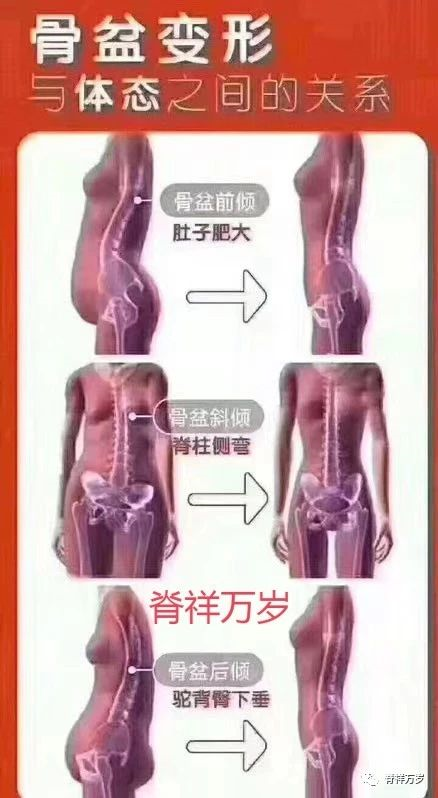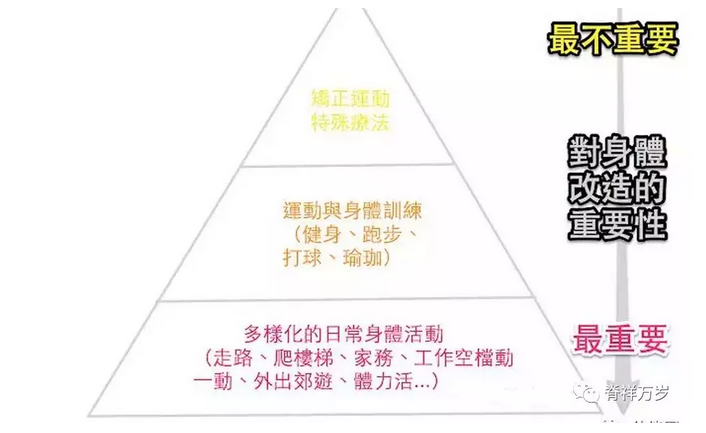
Service hotline:
13533607738
18602592233
Welcome to 广东脊祥万岁健康管理有限公司!
最新资讯

As the name implies, the starting point of the corrective movement is to adjust your original incorrect, abnormal, inappropriate, and inappropriate positively to the correct specific movement and action. Most of the time, corrective motion does not refer to a specific action, but refers to all actions that meet the above definition at a specific time and function. There will be the term corrective movement, because before the 1990s, corrective action was still within the scope of physical therapists'practice, and there was a clear barrier between corrective action and sports coaches who trained human sports ability. It is generally believed that from Grey Cook, corrective sports have gradually been brought into the field of sports training, expanding the business scope of sports coaches.
The biggest problem facing the corrective movement at present is that it is very popular, but the evidence is weak and the effect is unclear. Most of the corrective exercises involved in fitness are difficult to answer the following questions:
1. Is there any way to achieve the same function as normal exercise? In many clinics or data, core training may reduce back pain as much as general muscle training.
2. Without other training, the effect of correcting discomfort and increasing activity is usually very short. In this case, is there any difference in corrective exercise?

3. Many orthodontic sports seminars are based on the premise that incorrect posture can lead to injury, but they do not discuss whether this proposition is true (besides, most of the literature on athletes'injury rate points out that sleep, training, warm-up adequacy are more directly related to basic nutrition intake and injury rate).
4. Test items for corrective exercise (such as FMS) can improve through exercises unrelated to the test objectives (such as yoga), and it can not be ruled out that knowing the rules would have a better impact. The test scores were positively correlated with daily physical activity, age and BMI, but not with old injuries, motor ability and postural stability.
5. Before solving the problem, we must first confirm whether the problem exists. Most corrective exercises claim to solve problems (posture, body asymmetry, inadequate function, such as squatting range) that are difficult to prove whether they are inherent variability of the human body, or whether they can really become normal through corrective exercises. Unbalanced but competent bodies do not seem to be the exception of humans, but the norm.
6. Abnormal posture is not necessarily uncomfortable, uncomfortable or abnormal posture. For example, fitness coaches like to correct pelvic proneness is a good example. Many girls with pelvic proneness do not suffer from backache, while many have backache when sitting in a chair with pelvic proneness for too long.
But here's a reminder: most of the research related to human body or movement is new and constantly changing, and most of the projects worth studying and many people are interested in are very difficult to do large-scale experiments. After all, such experiments have to be involved in real human life, many objects are not easy to collect, and there are too many conflict factors (you know, any lifestyle). Change often affects a person's ability to move more or less.
Because the effectiveness of corrective exercise is unclear, but there are claims of varying degrees in individual cases, and even some people will be uneasy if they don't do it. Therefore, it is suggested that no more than 10% of all training time should be spent.
This applies not only to corrective sports, but also to all "newly invented sports and actions". The reason why basic warm-up exercises, squats, push-ups, horizontal bars, shoulder pushes and hard lifts are still here over time may be that they are "obviously effective". Ninety percent of your time is spent in these places, and another ten percent is spent experimenting with new things to ensure that you stay effective over time, but enjoy exploring new things.
The answer is:
1. The effect is not clear.
2. Generally speaking, in the vast majority of cases, the inadequate activity (squatting, low hand raising, stiff spine...) is due to insufficient exposure frequency (meaning not enough practice ~), not to the lack of a certain way of postural adjustment. What you have to do is don't stop practicing, and you'll start to prove this over and over again. The most terrible thing is to practice stopping and stopping. Every method tastes a little and immediately starts to want to change.
3. Some people practice too little, not entirely because they have no patience or willpower. Many times, they are "without the correct exercise process, which leads to repeated hovering in the systematic interruption", so that they begin to spend disproportionate time looking for secondary solutions.
What is a systematic interruption? Every time a problem appears to be irrelevant to each other, it is actually the same root cause. Like a person who is always late, the reason for being late is different every time, because the real reason for his being late is not those reasons, but the reasons related to himself.
Some people are impatient, and each time they start a new training, they let themselves quickly exceed the maximum amount of recoverable training and explode; some people start a new plan with incorrect expectations (and then quickly lose interest) because they have little knowledge of the principle of human progress; some people tend to use the way of ignoring body sensations, so no matter how many times they start training. I didn't learn more about myself.
Exercise requires correct angle, strength and safe Taiwanese soft manipulation.


The information comes from the Internet and the copyright belongs to the original author. If there is any infringement, please contact us in time and we will delete it. (If there are similarities, the right of interpretation belongs to Long Live Jixiang.